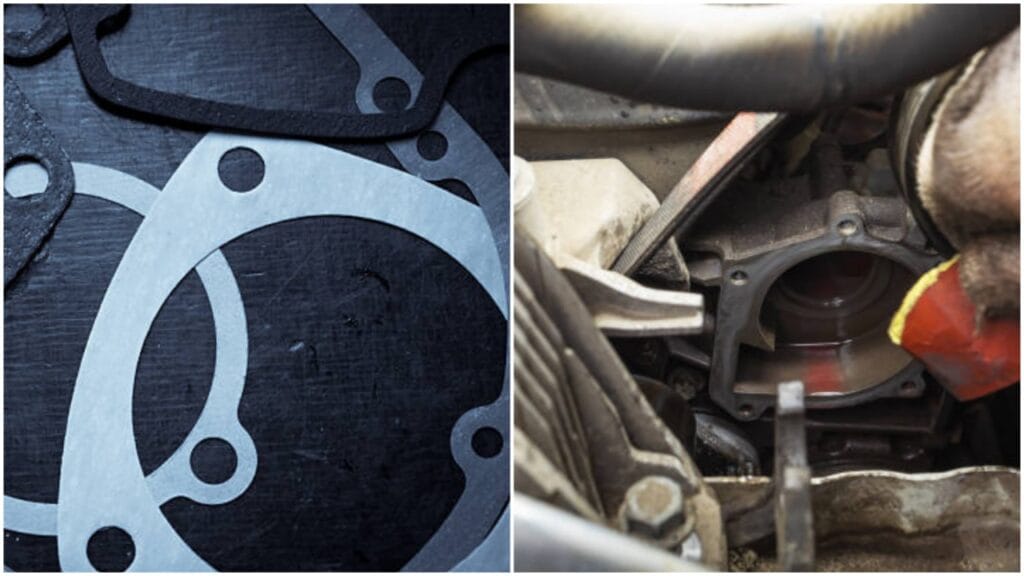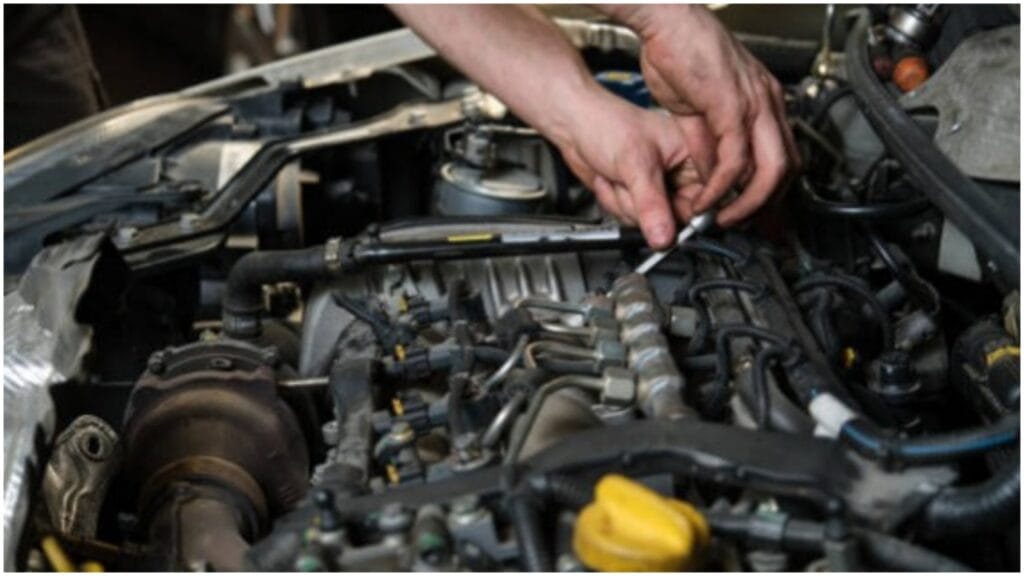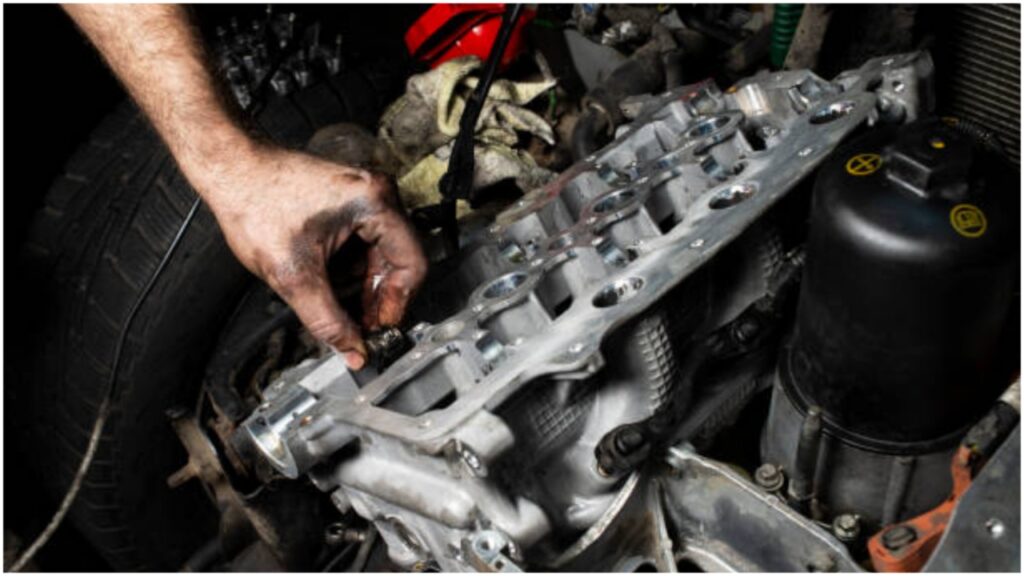Replacing the valve cover gasket on a Subaru Outback typically costs between $300 and $600. The cost varies depending on the car model and location. Labor tends to make up most of the cost since accessing the valve cover can be tricky.
On average, you’re looking at about two to four hours of work, which can add up quickly depending on the shop’s hourly rate. If you choose to go with an OEM (original equipment manufacturer) gasket, it may cost a little more compared to an aftermarket one, but it could offer better durability in the long run.
Some factors can push the price up if worn out, like replacing additional components, such as spark plugs or valve cover bolts. The bill is higher if you want to get a work internship. You may have already found the information you are looking for, so please read the following sections patiently for better details and understanding.
What’s the Deal with the Valve Cover Gasket?
The valve cover gasket seals the valve and the engine block, keeping oil from leaking out and contaminating other engine parts. If the gasket fails, oil can start dripping down the engine, creating a mess and potentially causing engine damage over time.
When the engine gets hot, you may notice oil spots on your driveway or smell burning oil. In some cases, smoke may also be visible under the hood. If you’ve seen these signs, it’s time to replace the gasket.
How Much Does Replace the Valve Cover Gasket on a Subaru Outback Cost?
Replacing the valve cover gasket on a Subaru Outback isn’t a cheap fix, but it’s not as bad as you might think. Generally speaking, you can expect to pay anywhere from a few hundred to over a thousand dollars, depending on several factors.
If you’re taking it to a mechanic, labor will likely be the most significant cost. Depending on the engine type and the specific year and model of your Outback, the job can take several hours.
The parts are relatively inexpensive, with the valve cover gasket costing between $20 and $50. But labor rates are higher, so the entire job could cost anywhere from $300 to $600.
Can You Replace a Valve Cover Gasket Yourself?

Yes, it’s doable if you’ve got the right tools and some mechanical know-how. Replacing a valve cover gasket on a Subaru Outback isn’t overly complicated but requires patience and precision. If things are a little sticky, you’ll need a few essential tools, such as a socket set, torque wrench, and gasket scraper.
If you decide to tackle this project independently, the first step is gathering all the necessary materials. You’ll want to ensure a replacement valve cover gasket matches your specific model. It’s always a good idea to get OEM parts, but aftermarket options can work, too, as long as they’re high-quality.
Once everything is ready, you must remove any components blocking the valve cover, like hoses or wires. Once you’ve exposed the valve cover, it’s time to remove the bolts holding it in place. Please track where each bolt goes because they might be different sizes.
With the valve cover off, you’ll need to scrape off the old gasket and clean the surface before installing the new one. Any old gasket material left behind could cause the new gasket to seal poorly, leading to another leak. Take your time with this part—cleaning the surfaces properly is key to a good seal.
Once everything is clean and dry, place the new gasket in position and carefully reinstall the valve cover. T-torque the bolts to the manufacturer’s specifications to avoid warping the cover or creating an uneven seal. After that, reassemble everything you took off earlier and start the engine to check for leaks.
Why It’s Worth It to Address the Leak Early
If you catch the leak early, you might not even need to worry about engine damage. But if you let it go, you could be looking at more expensive repairs.
Oil leaks can cause the engine to run low on oil, leading to overheating, poor performance, or even total engine failure in extreme cases. Replacing the valve cover gasket might seem inconvenient, but it’s much cheaper than rebuilding an engine.
The longer you let a valve cover gasket leak go, the more damage it can do to other engine components. For example, oil can get onto the timing belt or spark plugs, leading to misfires or even timing issues. Fixing these problems down the line can cost you a lot more than a simple gasket replacement.
The Importance of a Good Sea
A well-functioning valve cover gasket is essential for your Subaru Outback’s engine health. A bad valve cover can cause significant damage to a car’s engine.
Oil leaks could contaminate other engine parts, causing corrosion or accelerated wear. So, don’t overlook this simple but crucial part of your car.
Why Leaks Happen
Why does the valve cover gasket fail? Over time, the rubber or silicone material that forms the gasket can dry out and crack. Heat and pressure from the engine cause this degradation.
It’s a natural process. Another common cause is improper installation. If the gasket wasn’t seated correctly or the bolts weren’t tightened evenly, leaks could happen much sooner.
Other Symptoms of a Leaking Valve Cover Gasket
Oil spots on your driveway are a pretty obvious sign, but there are other symptoms to watch out for. If you notice a burning oil smell, that’s a red flag.
When you’re driving, the engine bay might smell like burnt oil. If your engine is running hot or you see smoke from under the hood, it could be a sign that oil is dripping onto hot engine parts.
The Role of Regular Maintenance

Replacing the valve cover gasket is a big part of maintaining your Subaru, but it is also essential to keep up with regular engine maintenance, including oil changes.
Regular oil changes keep the engine running smoothly and prevent sludge buildup. Over time, sludge can cause the gasket to fail prematurely. Make sure to keep your oil fresh and at the proper level.
When to Seek Professional Help
If you’ve never worked on a car, the valve cover gasket replacement might seem. Don’t hesitate to take your vehicle to a professional if you are uncertain.
It’s okay to admit when a job is beyond your skills. Mechanics have the experience and tools to do the job right. They’ll also have a quicker turnaround than you might expect.
The Environmental Impact of Oil Leaks
When oil leaks onto the ground, it doesn’t just make a mess; it can pollute the environment. Oil can seep into the soil and groundwater, affecting local ecosystems.
It’s also about doing your part to protect the planet. Fixing leaks promptly is one small step toward responsible car ownership.
Long-Term Benefits of Fixing Leaks
If you take care of your valve cover gasket leak, you’re not just saving money. A well-maintained engine lasts longer and runs better.
Replacing a valve cover gasket reduces the risk of more significant issues, including oil starvation and engine overheating.
Choosing the Right Gasket
When replacing the valve cover gasket, choosing the right one matters. While OEM (original equipment manufacturer) parts are always recommended, high-quality aftermarket gaskets can also be a good option.
Ensure you buy a gasket explicitly designed for your Outback’s year and engine type. A poorly fitting gasket could lead to another leak; no one wants to deal with that.
Torque Specifications Matter
You shouldn’t ignore the torque specifications for the valve cover bolts. Too tight, and the valve cover could warp. Too loose, and you risk another leak. Be sure to tighten the bolts to the manufacturer’s recommended torque.
Don’t Delay: Act Fast
If you think you have a valve cover gasket leak, don’t wait. The longer you leave it, the more damage can occur.
Oil leaks can lead to other expensive repairs, such as clogged catalytic converters, fouled spark plugs, or damage to engine seals. If you’re not sure, have it checked out.
A Little DIY Goes a Long Way

While some car repairs are complicated, replacing the valve cover gasket is a job many DIYers can handle with some patience.
If you’ve got a bit of mechanical know-how and the right tools, it’s a relatively straightforward job. Sure, it might take a few hours, but the sense of accomplishment—and the money you’ll save—makes it worth it.
FAQ’s
Subaru valve cover gasket replacement?
Replacing the valve cover gasket on your Subaru is a vital repair that helps keep your engine in good shape. The valve cover gasket seals the joint between the engine block and the valve cover.
Over time, it can wear out, crack, or get brittle, leading to oil leaks. If you notice oil spots on your driveway or a burning smell, it could be a sign that the gasket needs replacement.
You’ll need to remove the valve cover, clean off the old gasket material, and install a new one to replace the gasket.
This job requires essential tools, like a socket set, a torque wrench, and a gasket scraper. You’ll also need to ensure the gasket is seated correctly to avoid future leaks.
While you can do this yourself if you have some mechanical experience, it can be tricky for first-timers. If you’re uncomfortable with the process, taking your Subaru to a mechanic is a good idea.
Valve cover torque sequence?
Following the correct torque sequence is crucial when replacing the valve cover gasket. Tightening the bolts in the proper order ensures an even seal and prevents warping the valve cover. Start by hand-tightening the bolts to avoid cross-threading.
Then, using a torque wrench, follow a crisscross pattern to distribute the pressure evenly evenly. Typically, you’ll begin with the center bolts and work toward the edges, tightening in small increments. This ensures that the gasket sits flat and doesn’t get pinched.
The exact torque value varies depending on your Subaru model, so always refer to the manufacturer’s specifications.
Overtightening can damage the valve cover or gasket, while under-tightening might result in leaks. Once the bolts are tightened to the specified torque, double-check them after a short drive.
Torque specs for valve cover gasket?
When replacing the valve cover gasket on your Subaru, using the correct torque specs is crucial to ensure a proper seal.
The torque specification for the valve cover bolts generally ranges between 7 to 10 ft-lbs (or 9 to 14 Nm), depending on your vehicle’s year and engine model.
Using the proper torque ensures that the gasket doesn’t get over-compressed or under-tightened, which can lead to leaks or damage.
Always check your specific model’s manual for the exact torque value to avoid any issues, as it may differ slightly.
Start by hand-tightening the bolts, then use a torque wrench to tighten them to the recommended specification.
A crisscross pattern is essential to ensure an even pressure distribution across the valve cover when tightening the bolts.
Overtightening the bolts can cause the valve cover to warp or damage the gasket while under-tightening can lead to leaks.
After the initial torque, it’s a good idea to recheck the bolts after a short drive to ensure they’ve stayed secure.
Can a bad valve cover gasket cause oil consumption?
Yes, a bad valve cover gasket can cause oil consumption, and you’ll want to address it sooner rather than later. The valve cover gasket sits between the valve cover and the engine, sealing the area to prevent oil from leaking.
When this gasket fails, it creates an oil leak, which can lead to a noticeable drop in oil levels. Over time, as the gasket deteriorates or cracks, oil can seep out and drip onto the engine components below. This results in oil loss, which can cause your engine to consume more oil.
One issue with a bad valve cover gasket is that it doesn’t just cause oil to drip out onto the engine. The oil can also burn off, especially when it drips onto hot engine parts like the exhaust manifold or cylinder head.
As the oil burns, it essentially disappears, leaving you with less oil in the engine. This increases oil consumption, as your engine burns oil faster than expected. You should top off the oil more frequently, even though you haven’t driven excessively.
Besides burning off, oil loss through leaks can eventually lead to low oil levels, which can cause engine parts to run dry. This means the engine isn’t properly lubricated, leading to increased friction and wear.
Over time, this can cause further damage to critical components like the pistons, valve train, and camshaft. This damage increases oil consumption and can lead to more expensive repairs.
If you notice oil spots on your driveway or the engine starts smelling like burnt oil, these could be signs of a bad valve cover gasket. Even if you don’t see visible leaks, your engine might still lose oil through a faulty gasket, which can eventually increase oil consumption.
Fixing the gasket as soon as you notice the issue is essential for preventing long-term damage to the engine. Replacing a bad valve cover gasket is a relatively straightforward repair that can save you from dealing with more severe problems, like engine overheating or a seized engine.
Conclusion
If you have the tools, time, and patience, you can replace the valve cover gasket yourself. It’s not the most glamorous job, but it can save you a lot of money in the long run.
The valve cover gasket may be a small part of your Subaru Outback, but its job is mighty. Don’t let a slight leak turn into a big problem. Fix it early, and you’ll keep your Outback running smoothly for years.

